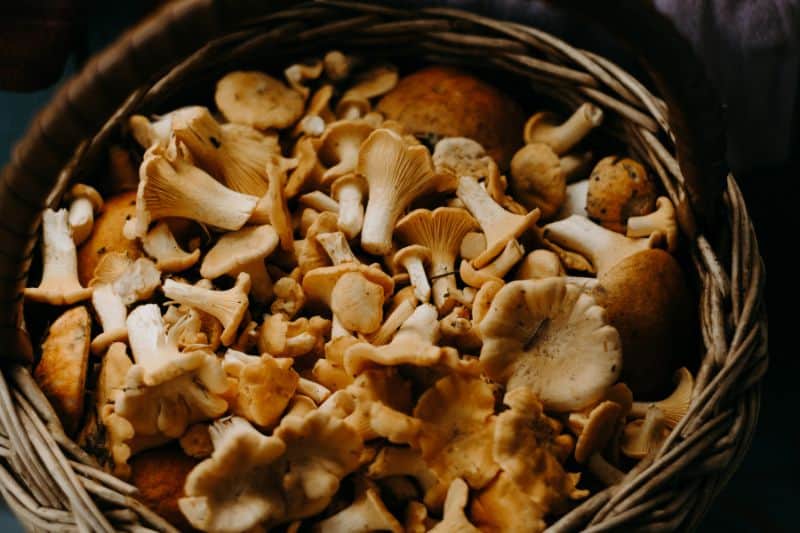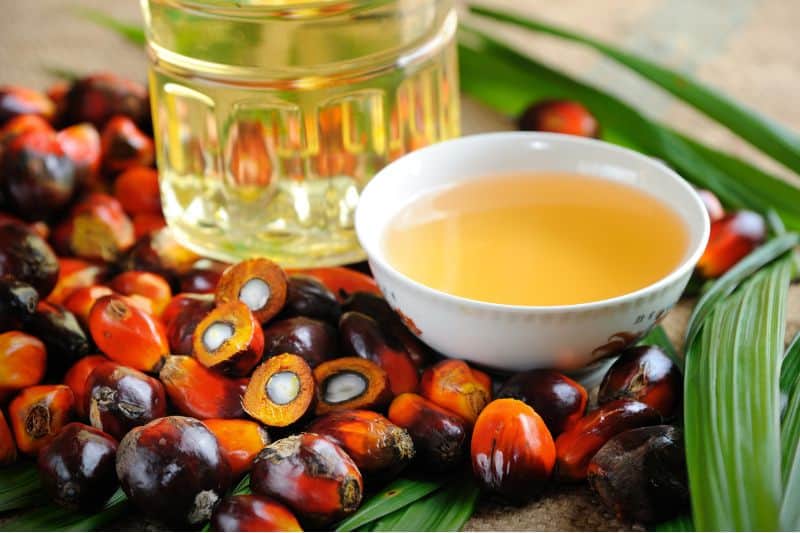The importance of forests in today’s world cannot be underestimated. Whether you live in a city or town far away from forests, you’ll be surprised to realize that most of the things or tools used in your home come from forests.
But it doesn’t necessarily have to be the forests within your area or country. It could be from those in a different continent, and that’s because forest-sourced products are traded globally.
Take classical examples of a parking ticket, a shopping list, or a tissue paper. They’re products sourced from forests, but they can be imported or exported from the source of production to different corners of our planet.
In other words, forests are significant players in everyone’s everyday life, irrespective of one’s location or locality. They provide ecosystem services that are not only essential for the survival of humans but also for enhancing overall welfare.
Trees, for example, absorb harmful greenhouse gases, provide clean water, protect watersheds, provide food and medicine, provide habitat, and serve as a buffer in the event of natural disasters.
Forests also offer many products, including shelter, water, livelihoods, food, and fuel security. Additionally, forests are significant employment creators across the world. To shed more light on this, here are the various forest products and their uses.
17+ Indigenous Food Products Produced From Forests
Since ancient times, forests have been a major source of human food. Although the dependence on them for food has decreased over the last centuries, a substantial quantity of foods in the market can still be attributed to forests.
In the old times, when humans were hunters and gatherers, the ancient man survived by eating hunted wild animals, forest fruits, and wild greens.
Today, only a small group of native communities exclusively survive on forest foods globally, but that does not mean that the world has really moved away from forest foods.
Besides, experts are encouraging a reversal to the time when humans used to source their foods in the forests by encouraging measures like agroforestry methods that allow forests and agriculture to thrive together.
But what are some of these foods?
Well, here are the uses of forest foods in the contemporary world.

1. Honey
Today, honey is one of the major foods sourced from forests. The biggest sellers of honey are communities that stay next to forests. Most governments allow humans neighboring forests to carry out commercial activities in the forests as long as they do not harm the forest.
Local governments allow individuals and communities to erect beehives in special zones as a way to encourage the peaceful co-existence of humans and forests and improve the economic status of the communities living close to forests.
2. Wild Meat
It is also common to find communities surrounding game parks feeding on wild meat. Game rangers also kill wild animals and allow the local communities to share the kill. Although game hunting is highly regulated in most places, it is not fully outlawed.
Communities surrounding forests eat game meat by hunting animals within the permitted perimeter. Some hotels within the forest even sell wild meat for consumption.
3. Fruits
Forests are also a major source of fruits. In some areas, fruits such as mango, orange, coconut, guavas, pear, and jackfruit, among others, freely grow in the forests. The fruits that grow naturally in forests vary from region to region, depending on the weather conditions.
Bananas and melons can also be found in forests. Other wild and semi-wild fruits sourced from forests include Piper guineense, Dacryodes edulis, Dennettiatripetala, Canarium schweinfurthii, Treculia Africana and Irvingiagabonensis among others.

4. Mushroom
Although mushroom is grown commercially, a substantial amount of edible mushroom is harvested in the forests. In the United States, Oregon, Idaho, and Washington forests are major players in the mushroom supply.
5. Palm Wine
Although palm wine has a short shelf life that makes its commercial production unviable, the communities in the regions where palm trees grow, such as West Africa, have a big demand for palm wine. As a traditional drink, most of these communities cannot hold social gatherings without palm wine.

6. Palm Oil
Palm oil production is the main economic activity of humans in the regions where palm trees grow. Although farmers can cultivate palm trees on their farms, the communities also share the produce from the palm forests within their vicinity.
7. Cola Nuts
Cola nut is a product that is mostly sourced from forests. It is imperative as it is one of the few stimulants allowed to Muslims. In certain regions such as West Africa, the Cola nuts are seen as a sign of friendship and peace, which gives the nut the center stage in meetings, reunions, festivals, and ceremonies.
8. Timber and Wood Products
Timber is one of the main products sourced from forests. It is also considered the major cause of deforestation in most uncontrolled forests due to its high demand, which attracts illegal logging. The need for timber in the furniture and real estate industries has pushed the demand above the regional supply, resulting in global trade.
Wood products are the major forest products that are traded globally, with the main sources of wood products being regions with tropical forests.
8. Wood Raw Material
Wood, as raw material, also known as Roundwood, is commonly used for commercial fuel. Although the data from countries on roundwood removals for fuel is unreliable, there is enough evidence of how important the wood raw material is in the energy sector.
In Europe, where the demand for roundwood is high, consumption has increased steadily over the last few decades. Researchgate predicts that the demand for Roundwood will reach six billion m3 by 2050 and will be the main driver for expanding industrial plantations.
The biggest importer of wood logs from the European region is China, with the main exporters being New Zealand and the Russian Federation. The US and Canada are also major producers of logs.
9. Sawn Softwood
The consumption of sawn softwood increased by 4.2% in North America and 2.7% in Europe in the last few years, based on data from FAO.
In the US and Canada, sawn softwood production increased by 5.4% and 1.1%, respectively. This material is a major product in the real estate industry.
10. Sawn Hardwood
Sawn hardwood is mainly used in flooring, furniture, millwork, pallets, and cabinets. The demand for hardwood products has been growing steadily over the decades as it is pushed by the demand for trendy designs and fashions.
Since it is usually more expensive than other alternatives, most people demand trendy hardwood designs during home renovations. Oaktree is a popular choice in the furniture and flooring industry.

11. Wood-based Panels
The demand for wood-based panels has been growing over the last few decades and is even expected to continue growing in the near future. The demand for particleboard is high in Germany, Poland, Italy, and Turkey and is mainly used to manufacture furniture.
The demand for fibreboard is also high in Europe, especially in Turkey, Poland, and Germany. Its main uses encompass laminate flooring, furniture, and various building applications such as moldings.
The consumption of plywood is also high in Germany, the UK, Italy, and Romania, with its main uses targeting the area of furniture, construction, and packaging.
12. Paper, Paperboard, and Wood Pulp
Paper and paperboard production has experienced mixed reception in the last few years. The production of newsprint has gone down due to the reduced distribution of newspapers.
However, the production and consumption of paper and paperboard continue to experience sustained demand, and the demand is expected to remain steady in the near future.
The application of paper, paperboard and wood pulp is wide, ranging from commercial to home applications.
Graphic papers in the printing industry continue to be the driving force in the industry. Nevertheless, household tissue is probably every household’s most used paper product.
Other Forest Products and Their Uses

13. Medicinal and Dietary Supplements
The medicinal and dietary supplements segment is considered the most valuable and largest segment of nontimber forest products. The largest consumer of herbal medicines globally is Europe, consuming about half of the world’s demand. The top three markets in Europe are Germany, France, and Italy.
Asia and Japan are the second biggest consumers of herbal products, consuming about a third of the global consumption. The popular forest-harvested medicinal plants are Blue cohosh, Black cohosh, Ginseng, Mayapple, Goldenseal, and Hawthorne.
14. Rattan, Cane, and Raphia
With the increasing call for banning plastic bags, attention is quickly shifting to alternative products such as baskets processed from rids. Other products that are made from raw materials sourced from forests include mats, traps, crop dryers, and small furniture.
15. Fuelwood
In rural places, wood is the cheapest and readily available form of fuel. Communities surrounding forests usually collect fallen limbs, branches, and dead trees from the forests. In some cases, people also cut down trees for use as fuel.
16. Grasses
Grasses are one of the most versatile forest products. They are used for various purposes — they serve as fodder for cattle and as an essential component in the papermaking industry.
Grasses like elephant and sabai are used in the paper industry. In fact, sabai is the most important grass that accounts for raw material in the paper industry. It grows mainly in West Bengal, Odisha, Bihar, and the Himalayan tract.
Approximately two million tonnes of sabai grass is collected annually in the paper industry.

17. Bamboo
Also known as the poor man’s timber, bamboo is yet another useful forest product. It could be used as it is or processed and made into products like baskets, mats, flooring materials and more.
One of the best things about bamboo is that it is perennial. So, the supply remains more or less constant throughout the year. Generally, it is produced in bulks in the states of Maharashtra, Kerala, and Mizoram, among others. Although bamboo belongs to the grass family, it grows out like a tree.
Also, bamboo is used as a raw material for certain delicacies across the planet. The tender and young shoots are eaten, and even the seeds can be consumed.
Statistically, 32% of the produced bamboo is used up for the purposes of construction, 30% in rural areas, 17% in the paper industry, and the remaining 7% for other purposes.
18. Dyes and Tans
Nothing obtained from the forests goes to waste. Everything collected has at least one use or the other. The same applies to the flowers and plants found in the forests.
While plant tissues are used to obtain tannins, dyes are obtained from various flowers. Trees most commonly used for tannins are oak, hemlock, anwal, mangrove, amla, wattle, myrobalans, etc.
Some dyes, like the beautiful bright red dye or the wonderful chocolate dye, are all obtained from flowers found in the forests. The bright red colour is extracted from the red sander, while the chocolate dye is from khair. The forest gives us approximately 2 lakh tonnes of dyes and tannins every year!
19. Fibers
One very important product that is obtained from forests is fibers. These fibers can vary in quality, depending on the tree from which it has been obtained. The coarse fibers so obtained are used for the purpose of rope making. The fine, strong and silky fibers that are obtained from the Ak tree are used for making fishing nets.
Final Thoughts
It is worth noting that the earliest man on earth lived as a forest dweller, sourcing everything he needed from the forest. However, the modern world has greatly evolved to a point where people can use synthetic products instead of natural forest-based products. But then, the fact remains that a big percentage of the things used in the modern-day are sourced from forests.
Things like furniture, beds, and tissue paper are just some of the products sourced from forests that make life on Earth much more comfortable. Nevertheless, irresponsible harvesting of forest products can be harmful to the environment. Caution should be taken, and regulation, as well as the implementation of policies on the use of forest products, must be strengthened and monitored.
References:
https://www.unece.org/fileadmin/DAM/timber/publications/2015-FPAMR-E.pdf
https://www.fs.usda.gov/science-technology/energy-forest-products/forest-products






